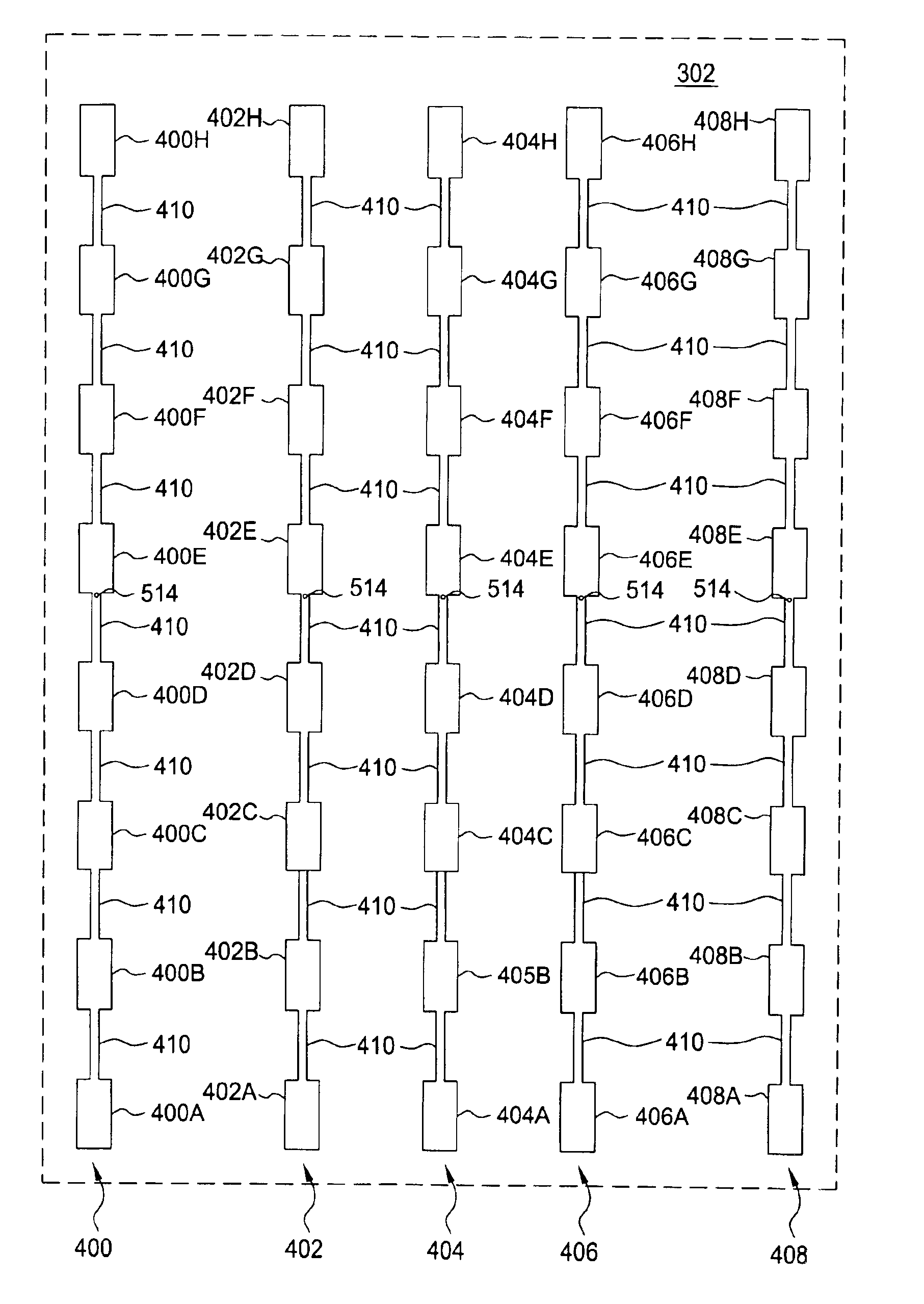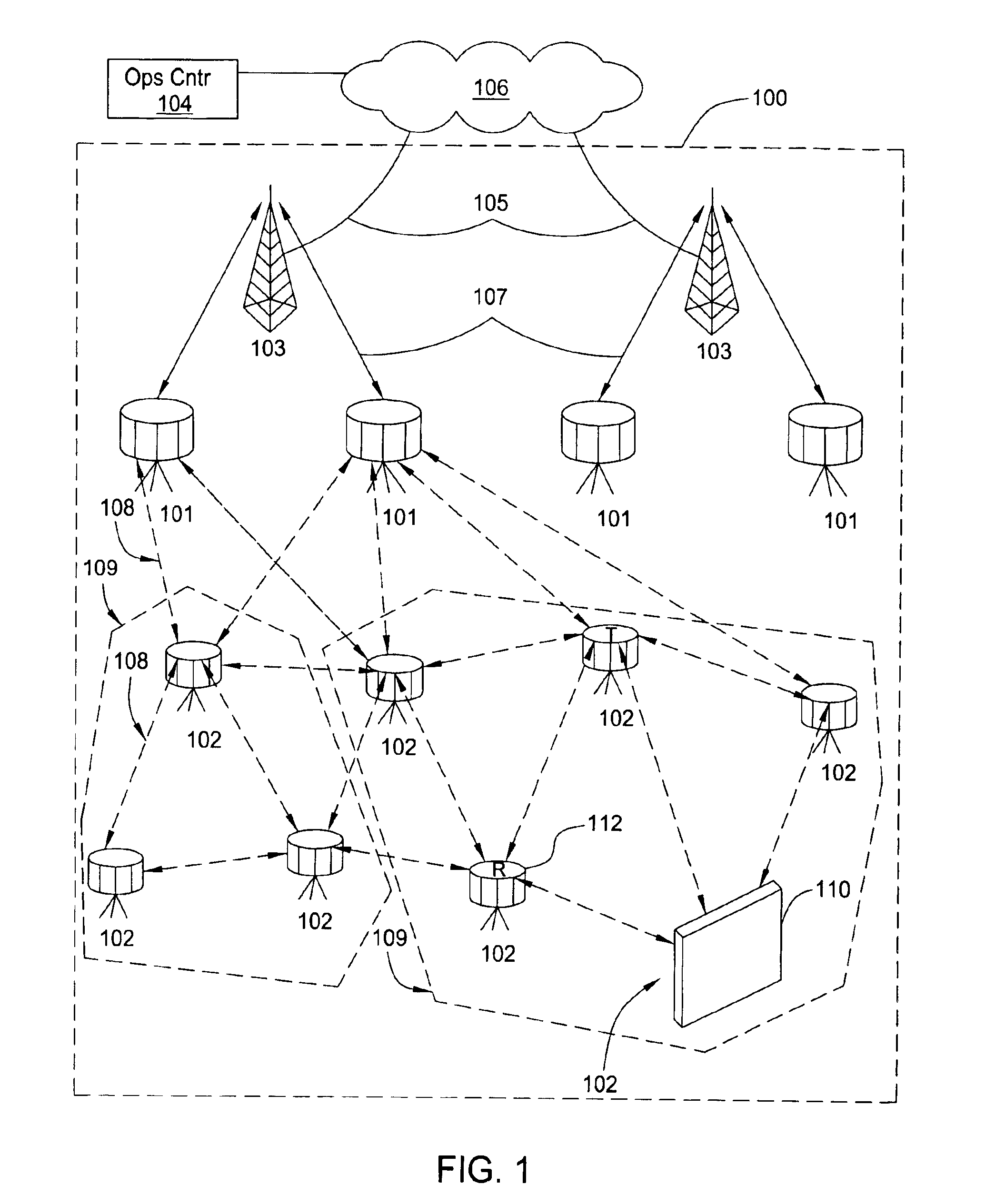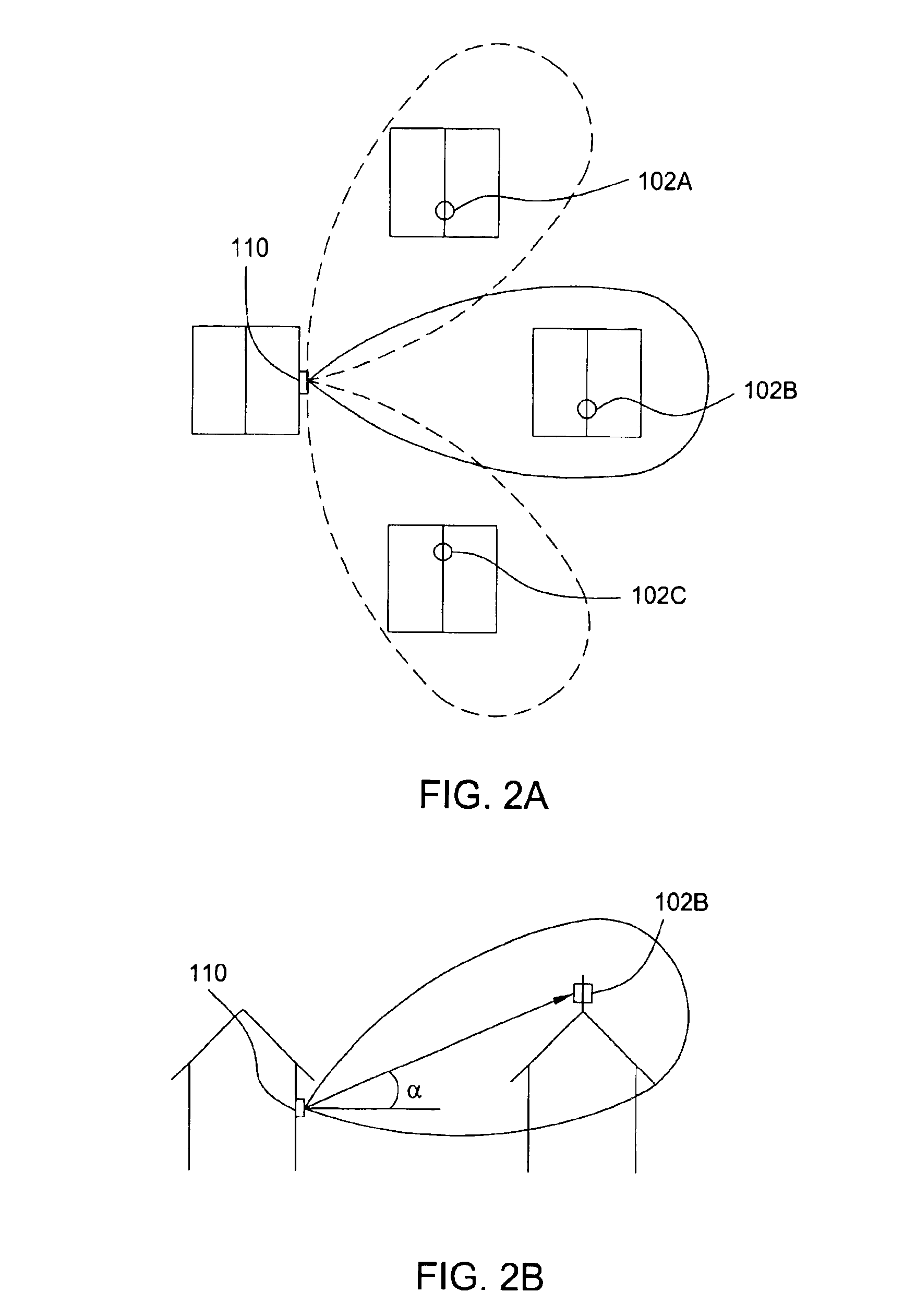Planar antenna for a wireless mesh network
- Summary
- Abstract
- Description
- Claims
- Application Information
AI Technical Summary
Benefits of technology
Problems solved by technology
Method used
Image
Examples
Embodiment Construction
[0025]FIG. 1 is a network diagram depicting an exemplary portion of a mesh network 100 as described in commonly assigned U.S. patent application Ser. No. 10 / 122,886, filed Apr. 15, 2002 and application Ser. No. 10 / 122,762, filed Apr. 15, 2002, which are herein incorporated by reference in its entirety. Network 100 comprises network access concentrators (SNAPs) 103, network access points (NAPs) 101 and network access nodes 102. Network traffic may be routed from a network access node 102 to a neighboring network access node 102. Such a neighboring network access node 102 may route such traffic to one of its neighboring network access nodes 102 and so on until a NAP 101 or a final destination network access node 102 is reached. Notably, nodes 102 may be in communication with one another but not with any node 101 to form a private wireless network.
[0026]SNAPs 103 may be coupled to various backhauls 105, which backhauls 105 may be coupled to network 106. Network 106 may be coupled to an...
PUM
 Login to View More
Login to View More Abstract
Description
Claims
Application Information
 Login to View More
Login to View More - R&D
- Intellectual Property
- Life Sciences
- Materials
- Tech Scout
- Unparalleled Data Quality
- Higher Quality Content
- 60% Fewer Hallucinations
Browse by: Latest US Patents, China's latest patents, Technical Efficacy Thesaurus, Application Domain, Technology Topic, Popular Technical Reports.
© 2025 PatSnap. All rights reserved.Legal|Privacy policy|Modern Slavery Act Transparency Statement|Sitemap|About US| Contact US: help@patsnap.com



